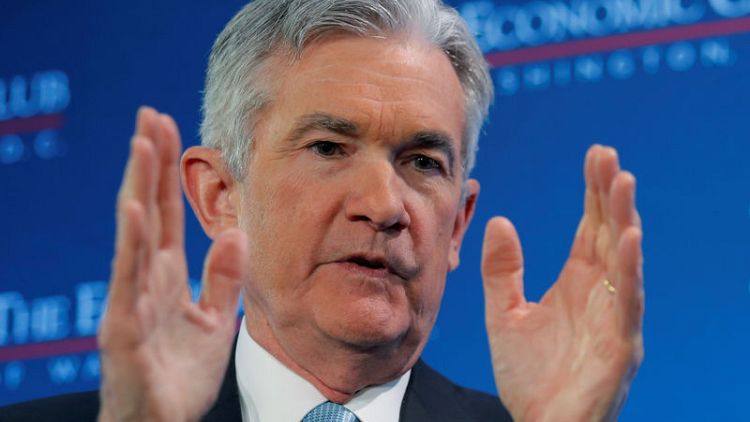By Howard Schneider
WASHINGTON (Reuters) - In the six weeks since a confident U.S. Federal Reserve raised interest rates in response to a "strong" U.S. economy, consumer confidence dropped, wholesale prices weakened, financial markets wobbled and home sales fell.
Further afield, China tried to boost lending for its slowing economy, the European Central Bank acknowledged ebbing growth in the euro zone, and the International Monetary Fund cut its world economic growth forecast and warned that global trade had nosedived as major nations squabbled about tariffs.
As they conclude their latest two-day policy meeting on Wednesday, Fed policymakers will have to decide how big a risk all of that poses to the near-decade-long U.S. economic expansion.
Their task is made more difficult by the delayed release of key economic data due to the recent 35-day partial shutdown of the U.S. government, including important reports on retail sales and gross domestic product.
If the case for caution wasn't strong enough, the sudden onset of a thick economic fog has made it so, analysts said ahead of this week's policy decision.
Fed officials are "clearly sounding as if they are pausing ... They don't know exactly what's happened to the economy because the data hasn't been coming through," said Melanie Baker, senior economist at Royal London Asset Management.
The U.S. central bank is scheduled to release its latest policy statement at 2 p.m. EST (1900 GMT), with investors widely expecting it to leave its benchmark overnight lending rate unchanged in a target range of 2.25 percent to 2.50 percent.
Fed Chairman Jerome Powell is due to hold a press conference shortly after the statement's release.
POSSIBLE PAUSE
Analysts at Goldman Sachs said they expected the Fed to "water down" the language from the December policy statement in which the central bank said "some further" rate increases would be warranted this year.
Such a move could pave the way for a possibly extended pause in monetary tightening, buying the Fed the time to see whether unemployment remains low and inflation, which by some measures has weakened, continues to hover around its 2 percent target.
The Fed raised rates four times last year amid unexpectedly stronger U.S. economic growth, spurring sharp criticism from President Donald Trump who accused the central bank of undercutting economic growth.
At its policy meeting in December, the Fed signalled it would raise rates twice in 2019, though it is now expected to hold off lifting borrowing costs for at least its next few meetings. Fed policymakers have been clear they plan to be "patient" on this front.
Investors, on the other hand, have fully written off the likelihood of any rate increases this year.
Those expectations could shift in either direction depending on whether the Fed's policy statement continues to characterize economic growth as strong and still describes the risks to the economic outlook as "roughly balanced," or whether policymakers feel recent events point to slower-than-expected growth.
Financial markets will also be watching how the Fed handles the growing spotlight on its practice of running off up to $50 billion in Treasury bonds and mortgage-backed securities from its balance sheet each month.
Some investors have cited that "taper" as a cause of recent market turbulence, saying the Fed has sent a confusing signal as it tacitly puts upward pressure on long-term interest rates even as policymakers seem ready to halt, for now, any more overt moves to raise rates.
The monthly decreases in the balance sheet are likely to continue, but many investors hope Powell will in his press conference be more precise about how much longer they may go on.
Graphic - Powell's push on Capitol Hill: https://tmsnrt.rs/2S6xiRk
(Reporting by Howard Schneider; Editing by Paul Simao)



